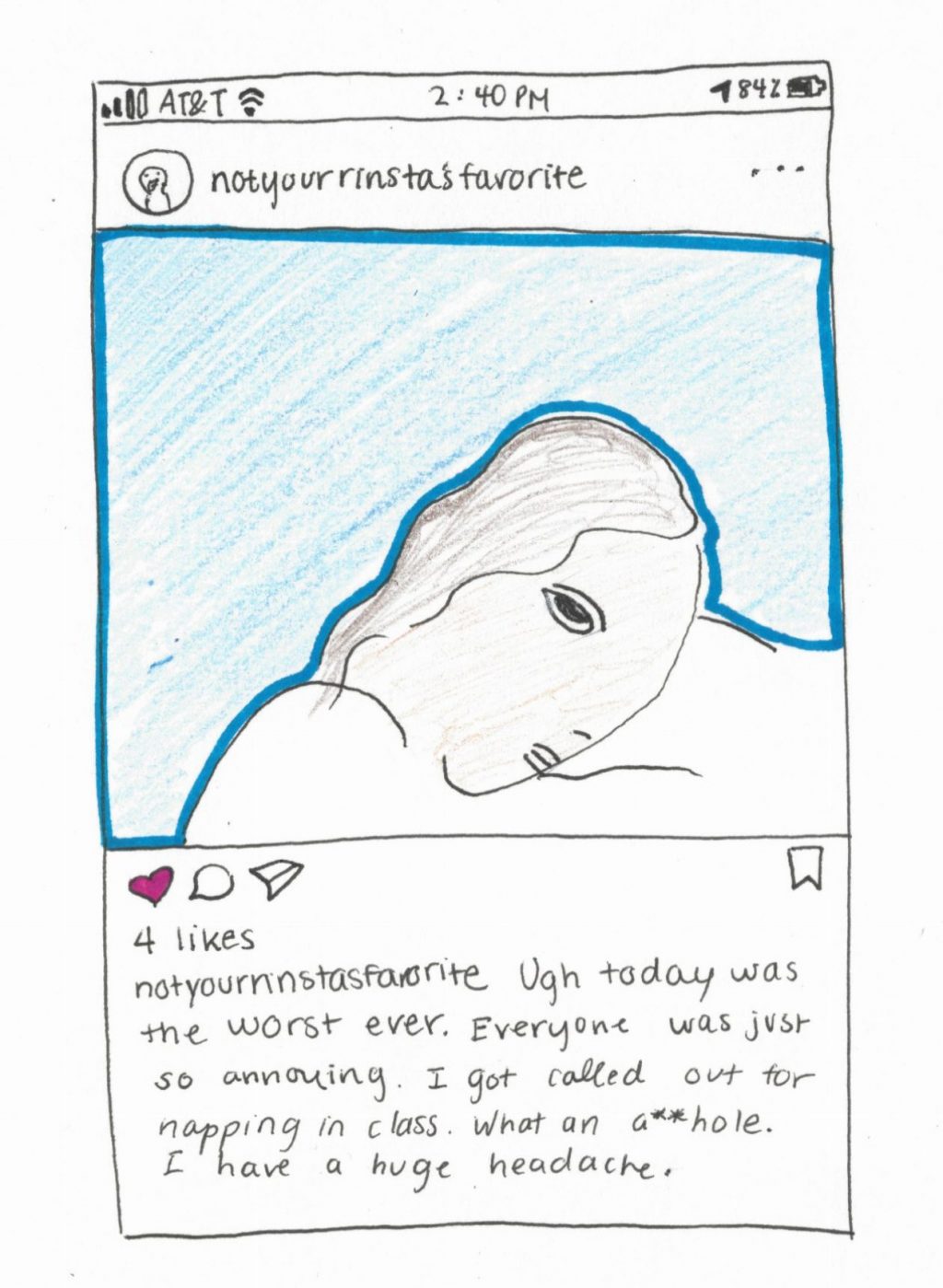No matter the platform, there always is some form of a duality on social media. YouTube supports everything from TED Talks to cat videos, and Twitter is a place to share your current thoughts or to slander politicians; Instagram is no different, and supports many different uses. Personal accounts, business accounts, as well as meme accounts all have a place on the platform. But probably the most common duality among today’s youth is the whole rinsta and finsta dynamic. We’ve all heard these words tossed around before, and many do not know what the differences between these two Instagram accounts entail.
Basically, a rinsta is a more of a “real” Instagram account, and people will often post things to create an aesthetically pleasing feed, more or less showing their “good side” in terms of living life. A finsta is more of a “fake” Instagram, and the accounts are often more private, largely due to the fact that people post more personal anecdotes or less flattering pictures.
Rinstas are more curated, and serve more as a place to uplift one’s social image, whereas finstas are more like a forum of information, and one in which the user will often post about random topics, things in their daily life, or more personal things of that nature. This begs the question of nomenclature: are rinstas really finstas and are finstas really rinstas?
Yes. We might as well flip these names for each respective account. Rinstas (“real Instagrams”) are more streamlined and people post less on them; oftentimes people will ask on their finsta if they should rinsta something (yes, the terms are used as verbs as well) because they aren’t sure if they look good in a certain picture. So isn’t that curated rinsta feed more of a fake representation? And vice versa, finstas are places where people are more conversational, more carefree, and share things they normally would in everyday discussion; so isn’t that non-curated finsta feed more of a real representation?
People mostly keep their finstas private on Instagram, and users must request to follow them. Oftentimes the owners of the finsta will only accept people with whom they are close, as people are more afraid to share their real self to a majority of people on their “fake” Instagram than having everyone see a figmented version of themselves. Yes, we live in a day and age in which people are too afraid to be real to others, and would much rather have the world see them through a filter of insecurity. Why are we afraid to share something real? Why do we obsess over finding the best photos at the best angles with the best people at the best locations at the best times with the best filters before even thinking of posting something?
We obviously want to make a good impression on others and craft a good public image, and so the outlet that supports these traits is what we quickly adopt as the more preferred version of ourselves. In a sense, one’s rinsta feed isn’t entirely fake, but it often represents a departure from one’s true lifestyle, convictions, or emotions; one person’s curated creation can be everyone else’s perception of reality on Instagram. The power that users have is immense to craft that image and oftentimes deceive the masses.
Finstas are exactly the opposite, and in some ways are more conversational. If someone is feeling an emotion or experiencing a crazy event, one will post about that in a way that almost seems like a text. When there is anticipation for a Ridgewood Public Schools snow day, you may be inclined to post a poll: “Snow Day tomorrow?” Then, when the glorious call arrives, you might feel like you want to post “SNOW DAY HYPE!” or something of that nature to your finsta story. It starts a conversation; it conveys an emotion. It’s kind of like an open forum rather than a feed.
In essence, being conversational and open is more real, as finstas reveal more character and truer thoughts. Using filters and only choosing the most beautiful pictures from your camera roll is more fake, as rinstas are places to only share the most exhilarating photos. The whole nomenclature needn’t change, but the role reversal of rinstas and finstas should present a thought provoking dynamic in which Instagram users practice a little bit of self-reflection regarding the ways they experience social media and convey themselves to the world.
Luca Richman
staff writer
Graphic: Amelia Chen

